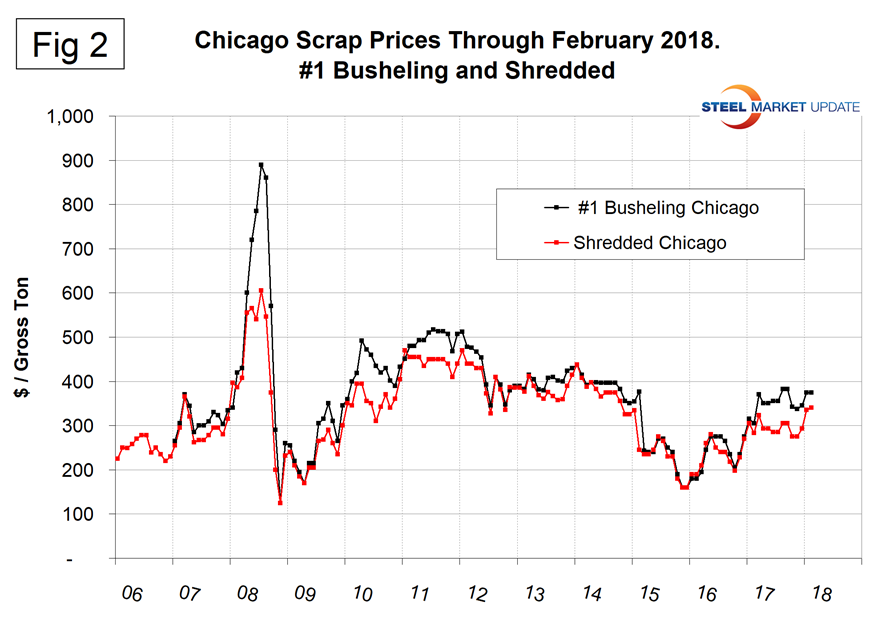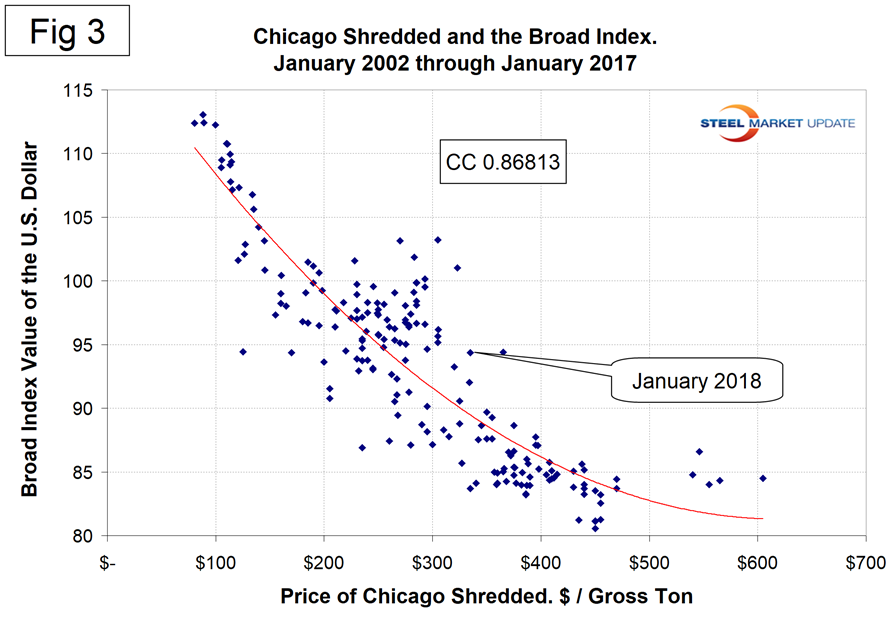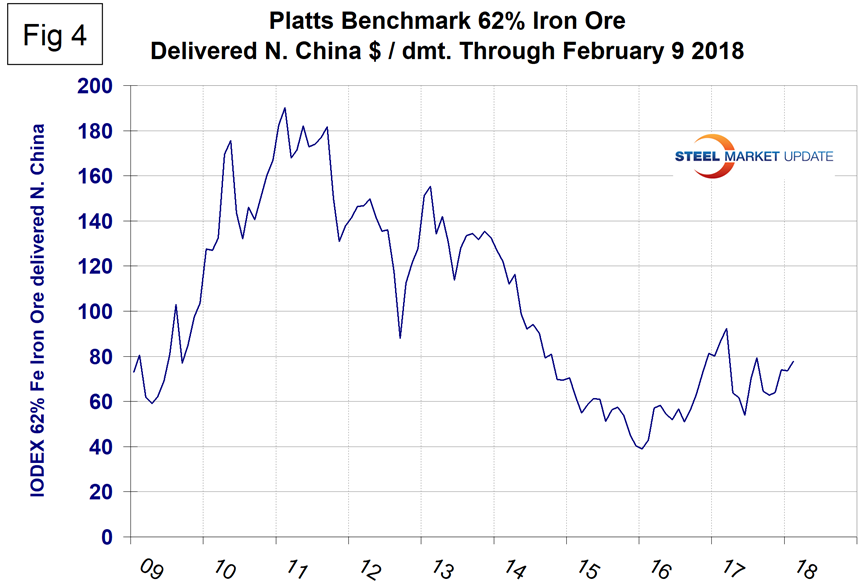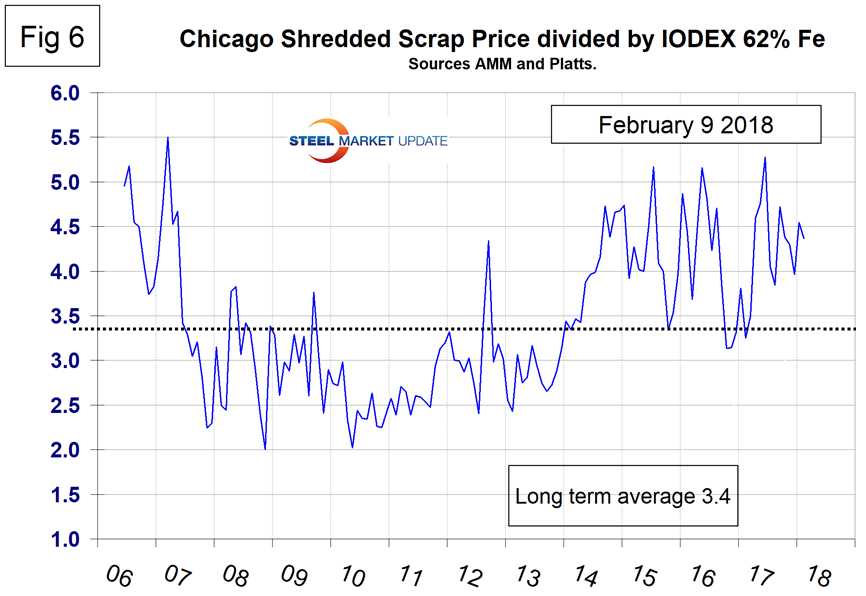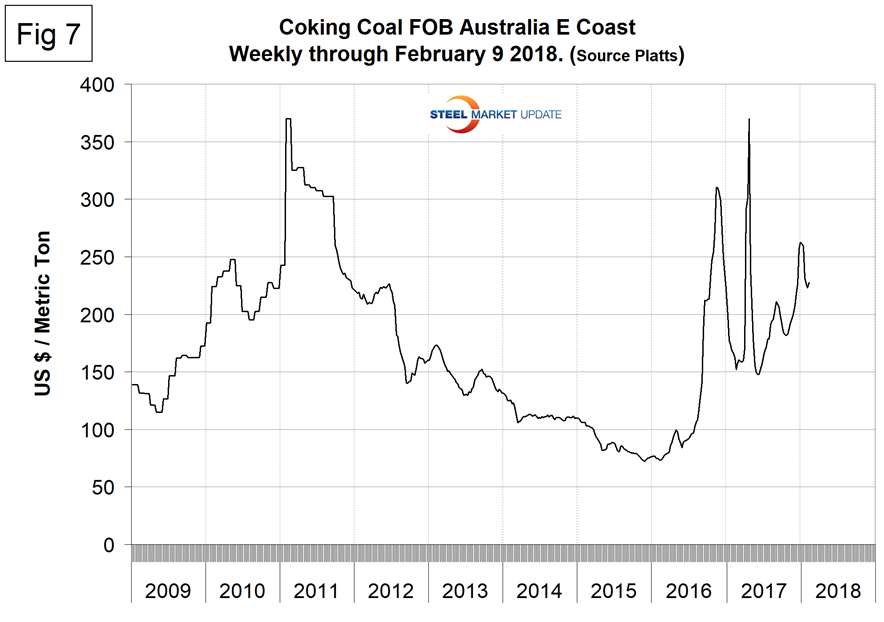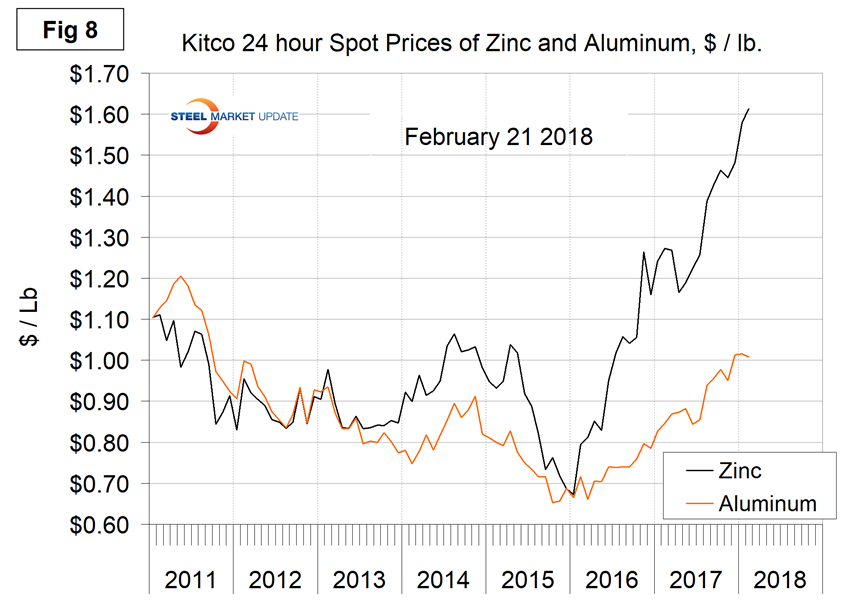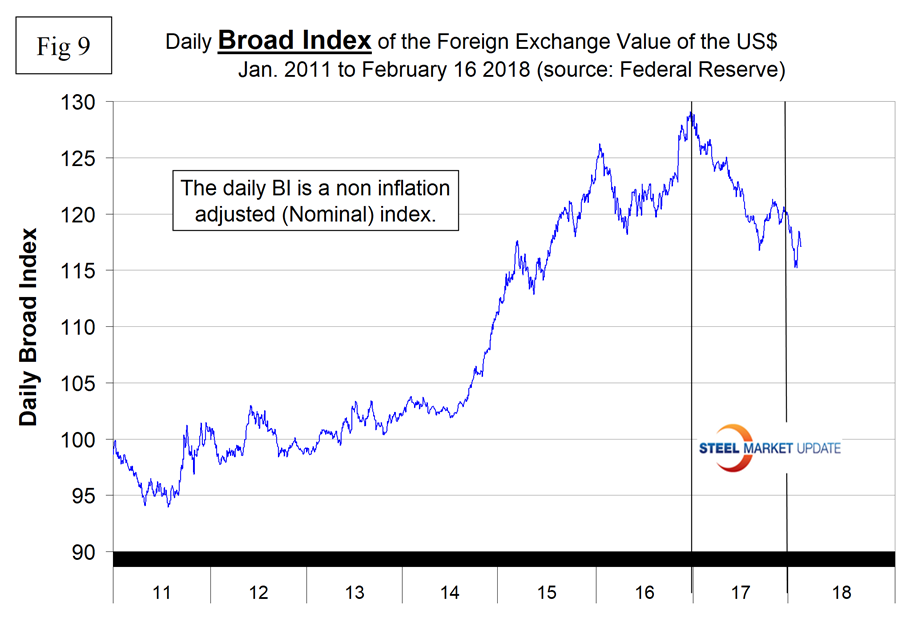Prices

February 21, 2018
Raw Material Prices: Scrap, Iron Ore, Zinc Advance
Written by Peter Wright
Scrap, iron ore and zinc prices advanced in February, while the price of coking coal has declined by $4 per ton since mid-January.
To put the raw materials analysis into perspective, Figure 1 shows the spread between Chicago #1 busheling and hot rolled coil ex works Indiana through Feb. 9, both in dollars per net ton. February was the first time for the spread to exceed $400 since April 2011. The spread has increased every month since September when it stood at $278.48.
Scrap
Figure 2 shows the relationship between shredded and #1 busheling, both priced in Chicago. In February, shredded was $340 per gross ton, up from $275 in November 2017. Busheling rose from $337 to $375 in the same time frame. The busheling premium was $35 in February, down from $77.50 in September last year.
Figure 3 is a scatter gram of the price of Chicago shredded and the Broad Index value of the U.S. dollar as reported by the Federal Reserve. This is a causal relationship with a correlation of over 86 percent.
Iron Ore
Figure 4 shows the Platts IODEX of 62% Fe delivered North China since January 2009. The index recovered to $92.30 on March 17, 2017, but declined to $77.85 on Feb. 9. Reuters Australia reported that iron ore prices are expected to average $51.50 per metric ton this year, down 20 percent from 2017 because of rising global supply and moderating demand from top importer China as its steel sector shrinks. Brazil-based Vale is planning to lift iron ore exports 7 percent in 2018 to 390 million metric tons. In Australia, Rio Tinto and BHP, along with Fortescue Metals Group, aim to add about 170 million tons of new capacity over the next several years. The forecast price decline, from an average of $64.30 a ton in 2017, continues into 2019 when the steelmaking raw material will average only $49 per metric ton, according to the Australian Department of Industry, Innovation and Science.
There is a long-term relationship between the prices of iron ore and scrap. Figure 5 shows the IODEX and the price of Chicago shredded through Feb. 9.
The correlation since January 2006 has been 83.74 percent. In the last 10 years, scrap in dollars per gross ton has been on average 3.4 times as expensive as ore in dollars per dry metric ton (dmt). The ratio has been erratic since mid-2014, but overall since then has benefited the integrated producers. There was a six-month respite for the EAF operators in Q4 16 and Q1 17, but now the ratio is once again high with a value of 4.37 on Feb. 9. The June ratio of 5.28 was the highest in over 10 years (Figure 6). Since Chinese steel manufacture is 95 percent BOF, this ratio has allowed them to be more competitive on the global steel market. In the last four years, there have been times when China could supply semi-finished to the global market at prices competitive with scrap.
Coking Coal
Coking coal prices have been highly erratic in the last 14 months. From mid-October 2017 to the end of December 2017, premium hard low volatile coking coal prices rose from $181.50 per metric ton to $262.25 FOB Australia’s East Coast (Figure 7). Since then, the price has declined to $227.50 on Feb. 9.
Zinc
The major use of zinc is for galvanizing. Other significant uses include the alloying of brass and bronze and in zinc-based alloys used in the die-casting industry. Kitco publishes a daily spot price of zinc, which we have transcribed to Figure 8. Just as a point of reference, we have included aluminum in the same graph. In January, the price of zinc resumed its upward trend reaching another all-time high of $1.6134 per pound on Feb. 21. The International Zinc Association meeting took place in Carlsbad California earlier this month. A speaker from Wood McKenzie projected that the shortfall in production would continue through 2022. A cyclical price peak of $2.15 per pound was forecast for 2019.
SMU Comment: There is an inverse relationship between commodity prices and the value of the U.S. dollar on the global currency markets. The value of the dollar has declined by 6.8 percent in one year through Feb 16. (Figure 9). A weakening dollar puts upward pressure on the price of those global commodities that are priced in dollars, as is clearly shown by the relationship between scrap and the dollar index in Figure 2.




